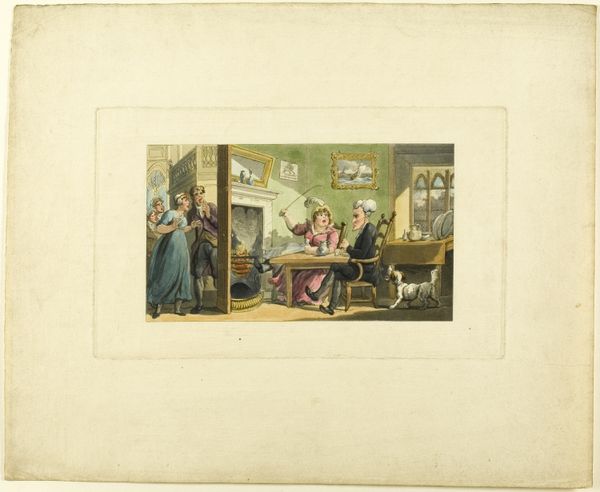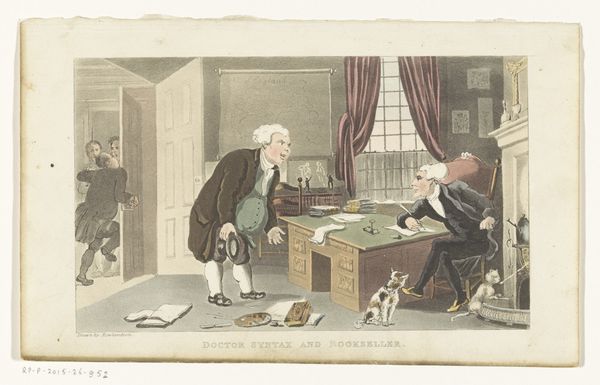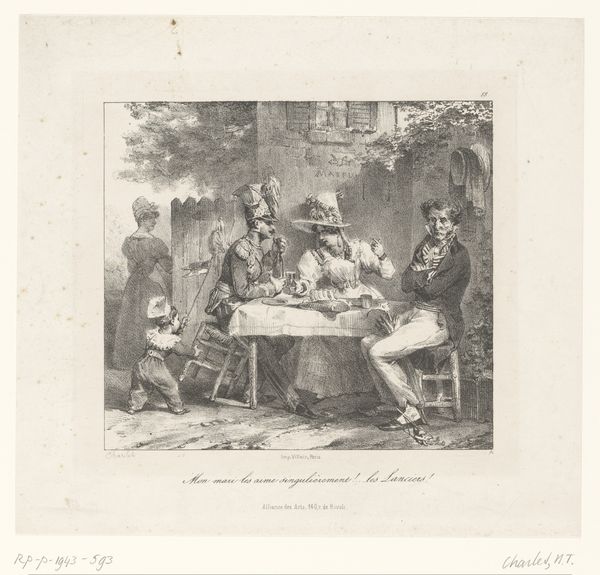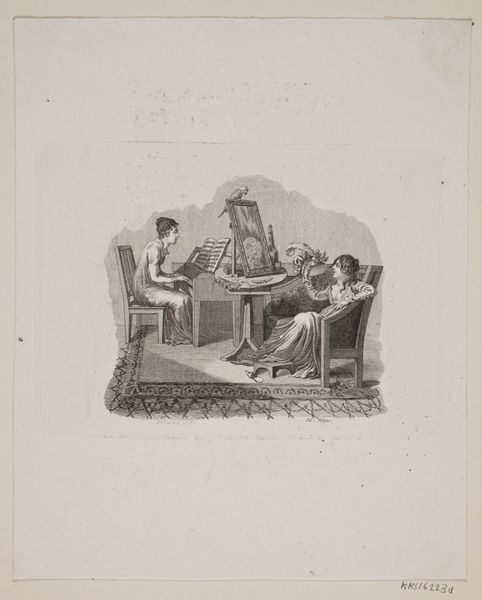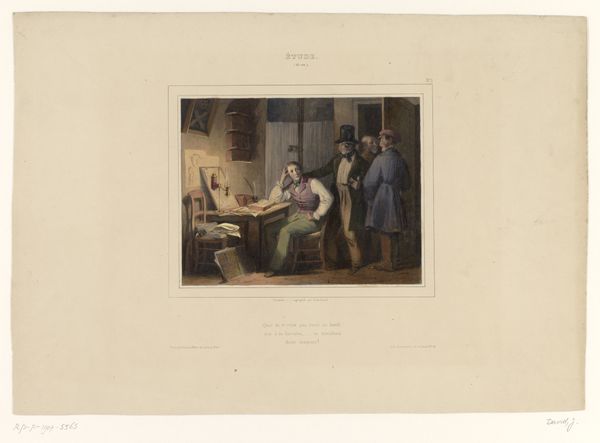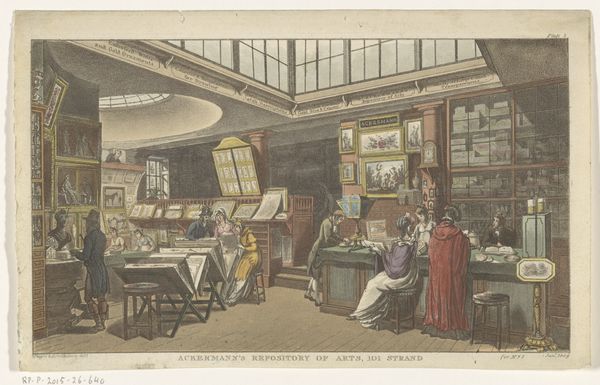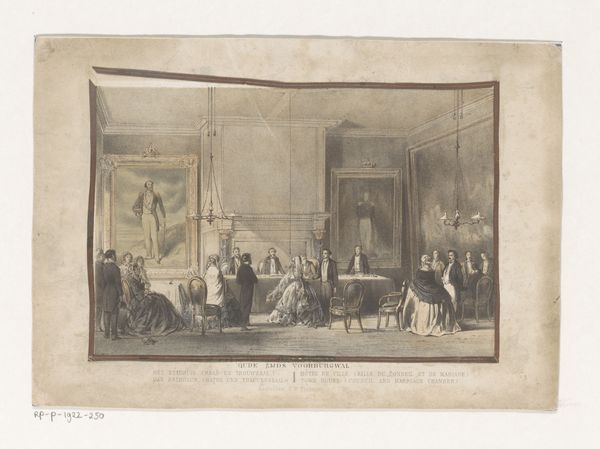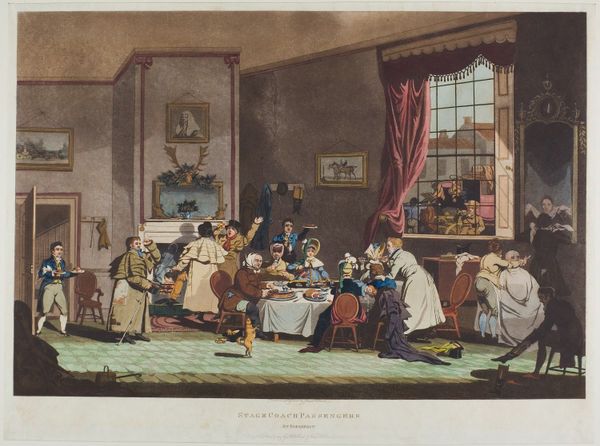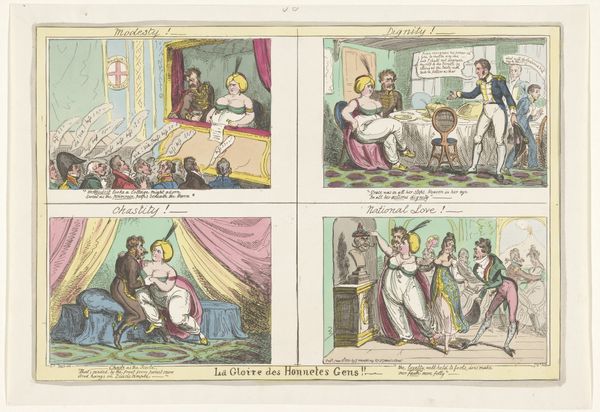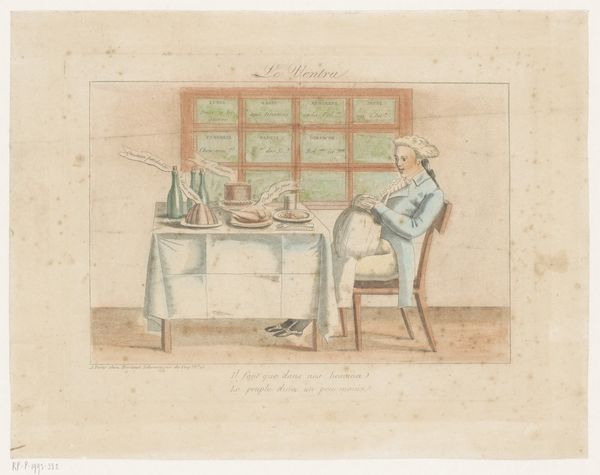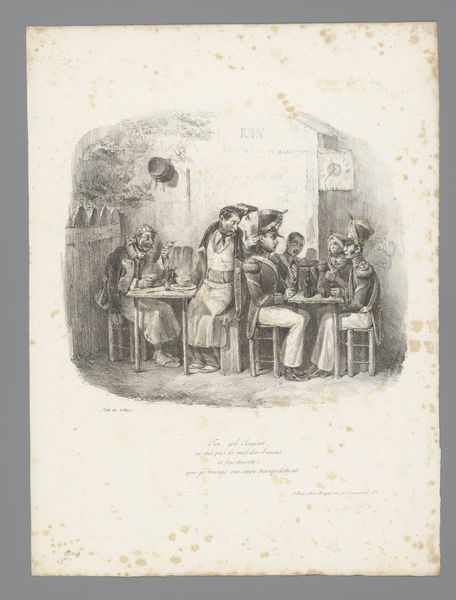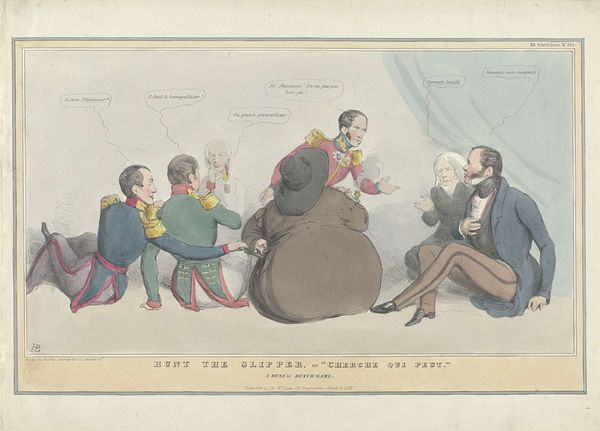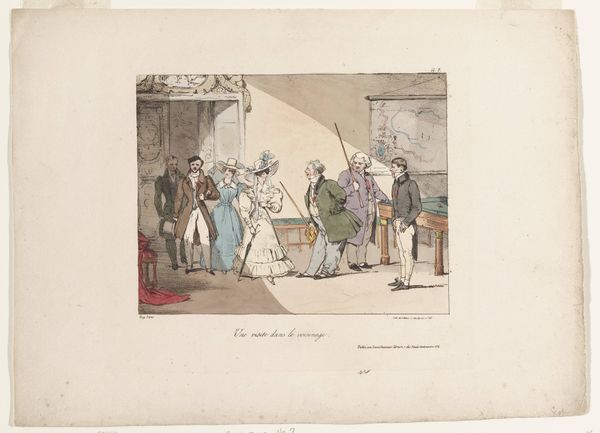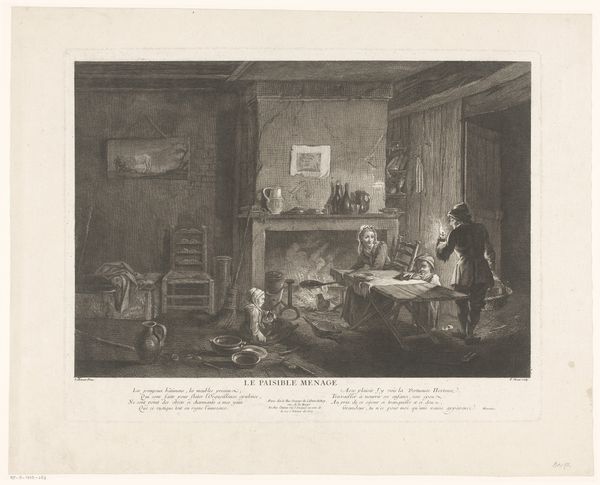
painting, etching, paper, ink, sculpture, engraving
#
portrait
#
narrative-art
#
painting
#
etching
#
caricature
#
paper
#
ink
#
sculpture
#
group-portraits
#
romanticism
#
genre-painting
#
academic-art
#
engraving
Dimensions: height 148 mm, width 240 mm
Copyright: Rijks Museum: Open Domain
Curator: Welcome. We're standing before Thomas Rowlandson's "Doctor Syntax in the Artist's Studio", created around 1821. Rowlandson, known for his satirical eye, here gives us a glimpse into an artist's workspace and the colourful characters that might inhabit it. Editor: My initial feeling? Delightfully chaotic. There's so much crammed into the scene – figures, sculptures, paintings – it feels like stepping into someone's lively imagination. Curator: Indeed. It is a fascinating encapsulation of artistic patronage and the social life surrounding art in the early 19th century. Rowlandson uses etching, ink and paper to bring us into a different, creative, era. The setting, a kind of a melting pot, blending artistry with social commentary. Notice the artist displaying his work while dignitaries ponder it. Editor: It feels intimate, doesn't it? Like we've stumbled upon a secret gathering. Look at the array of sculptures and busts – a sculptor's hoard! The contrast of the idealized sculptures with the caricatured figures adds such an entertaining layer. The mood, though…there's something faintly absurd in the air. Almost playful, the longer I look at it! Curator: The figures are intentionally caricatured to be read as a group portrait, underscoring Rowlandson's ability to merge social satire with genre scenes, so even the room itself with the visible art and window overlooking the outdoor landscape speaks to a particular lifestyle, even fashion and artistic expression. Editor: I get it. There's definitely commentary happening. Is it just me, or does the composition mirror that inherent power imbalance we often see between the artist and patron relationship. I mean who truly benefits? Look, you could write entire character studies just based on how they sit around the table! The more I reflect on the painting's caricatures and setting the more I am compelled by its narrative and the questions it begs. Curator: Absolutely. This piece shows us much more about the relationship between art, society, and economics during the Romantic era. It’s always revealing to consider the art world as a series of systems. Editor: It truly does makes you pause and reflect. What do we really value in a piece of art, is there value only found through its saleability? It truly is something to consider.
Comments
No comments
Be the first to comment and join the conversation on the ultimate creative platform.
